Effective Forest Management
- July 25, 2024
- 0 comment
Forest management is a critical aspect of environmental conservation and sustainable development. It involves the administration of forest resources to meet diverse needs and values such as timber production, wildlife habitat, recreation, and watershed protection. Effective forest management practices ensure that forests continue to provide ecological, economic, and social benefits for current and future generations.`
Understanding Forest Management
Forest management encompasses a broad range of activities and strategies aimed at maintaining and enhancing forest ecosystems. Key components include:
Sustainable Harvesting
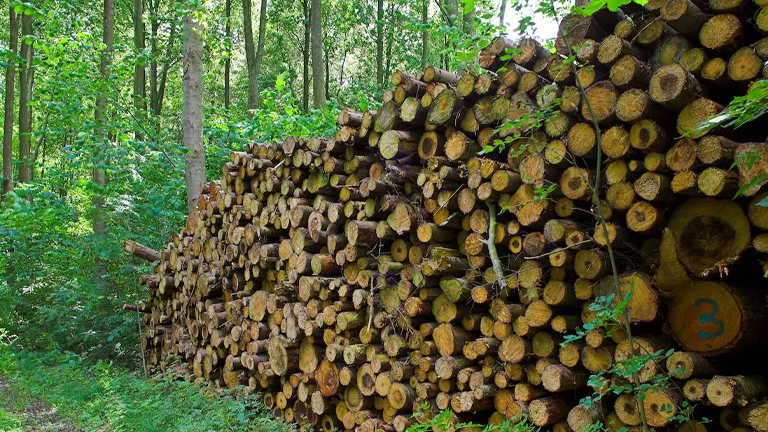
Forest management is a critical practice that ensures the sustainable use and preservation of forest resources. Sustainable harvesting is a key component of this practice, focusing on the careful extraction of timber and other forest products in a manner that maintains the health and diversity of the forest ecosystem. Unlike traditional logging methods, which can lead to deforestation and habitat destruction, sustainable harvesting involves techniques such as selective logging and reduced-impact logging (RIL). Selective logging carefully removes certain trees while preserving the overall forest structure, promoting natural regeneration.
RIL methods minimize soil disturbance and damage to remaining trees, protecting water quality and maintaining biodiversity. These practices, coupled with regular monitoring and adaptive management, ensure that forests continue to thrive and provide resources for future generations.
Conservation
Conservation is at the heart of forest management, aiming to protect and preserve forest ecosystems for their ecological, economic, and social values. Effective conservation strategies involve identifying and safeguarding areas of high ecological value, such as old-growth forests, wetlands, and wildlife corridors. Establishing protected areas and conservation easements ensures these vital habitats are preserved. Conservation also includes maintaining forest health through integrated pest management, controlling invasive species, and implementing fire management practices to prevent catastrophic wildfires. By conserving biodiversity and ecosystem services, forest management supports not only the wildlife and plants that depend on these habitats but also the human communities that rely on forests for clean air, water, and other resources.
Restoration
Restoration is a crucial aspect of forest management, addressing the degradation and loss of forest ecosystems caused by human activities and natural disturbances. Restoration efforts aim to return damaged forests to their natural state, enhancing their ecological function and resilience. Key restoration practices include reforestation, which involves planting native tree species to restore forest cover, and afforestation, which converts non-forested land into forested areas. Additionally, restoring degraded soils, wetlands, and riparian zones helps improve water quality and habitat diversity.
Community involvement is essential in restoration projects, as local knowledge and participation ensure that restoration efforts are culturally appropriate and sustainable. By investing in restoration, forest management not only repairs damaged ecosystems but also enhances their capacity to provide essential services and support biodiversity.
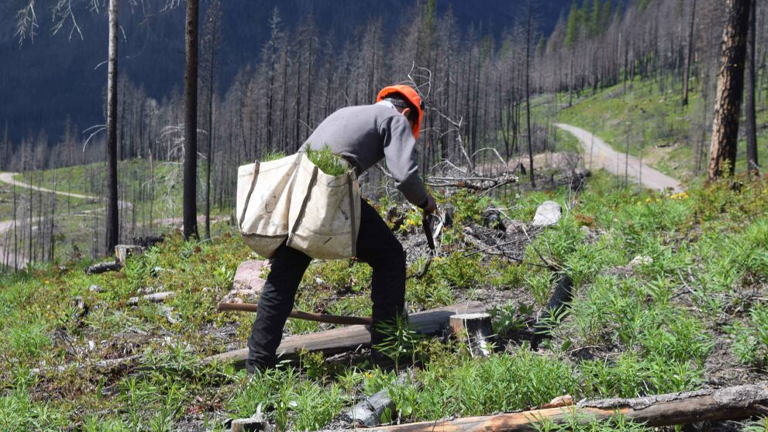
Forest Management Practices
Several practices are essential for effective forest management:
Selective Logging
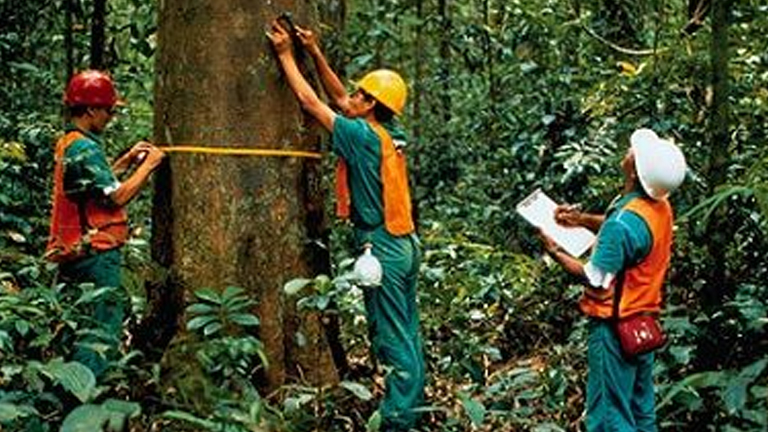
Selective logging is a forest management practice that involves the careful selection and removal of specific trees within a forest. Unlike clearcutting, which involves cutting down all trees in a designated area, selective logging targets only certain trees based on criteria such as species, size, and health. This method is designed to minimize environmental impact, preserve the overall structure and diversity of the forest, and promote natural regeneration.
By leaving a significant portion of the forest canopy intact, selective logging helps maintain habitat for wildlife, protects soil from erosion, and sustains the ecological functions of the forest. This practice is often used in combination with other sustainable forest management techniques to ensure that the forest remains productive and healthy over the long term.
Clearcutting
Clearcutting is a more intensive forest management practice that involves the complete removal of all trees in a specified area. This method is often used to quickly and efficiently harvest timber, create open spaces for new growth, or prepare land for other uses such as agriculture or development. While clearcutting can be economically advantageous and facilitate the regeneration of certain tree species that require full sunlight, it also has significant environmental impacts. The removal of all trees can lead to soil erosion, loss of habitat for wildlife, and disruption of water cycles.
To mitigate these effects, clearcutting is often regulated and combined with reforestation efforts, where new trees are planted to restore the forest. Proper planning and management are essential to ensure that clearcutting is conducted in a way that balances economic benefits with environmental sustainability.
Agroforestry
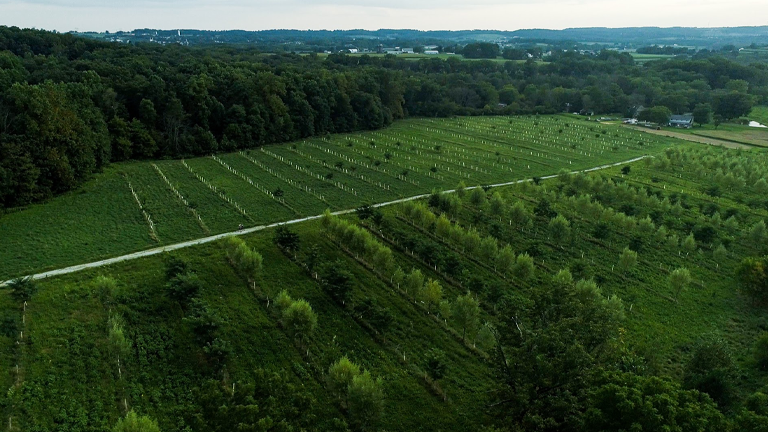
Agroforestry is an innovative forest management practice that integrates trees and shrubs into agricultural landscapes. This approach combines agriculture and forestry to create more diverse, productive, and sustainable land-use systems. Agroforestry practices include alley cropping, where rows of trees are planted alongside crops; silvopasture, which combines forestry with livestock grazing; and forest farming, where crops like mushrooms, berries, and medicinal plants are grown under a forest canopy. Agroforestry offers numerous benefits, including improved soil health, enhanced biodiversity, increased carbon sequestration, and greater resilience to climate change. By promoting a more sustainable and integrated approach to land use, agroforestry supports both agricultural productivity and forest conservation.
Controlled Burns
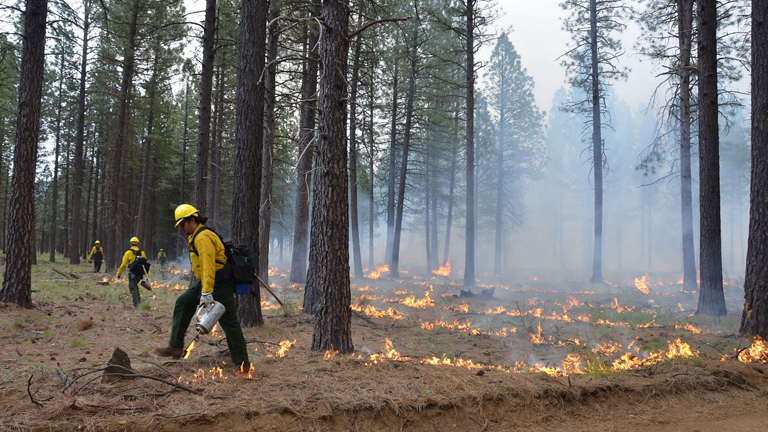
Controlled burns, also known as prescribed fires, are a forest management practice used to reduce the risk of severe wildfires, manage forest vegetation, and promote ecosystem health. By intentionally setting and carefully managing low-intensity fires, forest managers can remove excess vegetation, dead trees, and other combustible materials that fuel wildfires. Controlled burns mimic natural fire regimes, which are essential for the regeneration of certain tree species, the maintenance of open habitats, and the control of pests and diseases.
This practice also helps to recycle nutrients back into the soil, enhancing forest productivity. Controlled burns require careful planning, monitoring, and execution to ensure they achieve desired outcomes without causing unintended damage. When done correctly, they are an effective tool for maintaining healthy and resilient forest ecosystems.
The Role of Technology
Advancements in technology have significantly improved forest management practices:
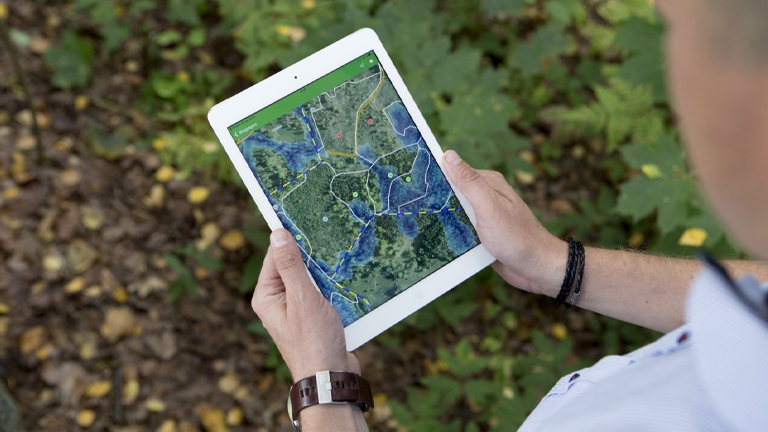
Remote Sensing and GIS
Remote sensing and Geographic Information Systems (GIS) have revolutionized forest management by providing precise, comprehensive, and up-to-date information about forest ecosystems. Remote sensing involves the use of satellites and aircraft to collect data on forest cover, health, and composition from a distance. This technology allows forest managers to monitor vast areas of forest land efficiently and accurately, detecting changes over time and identifying areas that require attention.
GIS complements remote sensing by allowing the integration, analysis, and visualization of spatial data. Forest managers can create detailed maps and models to understand the distribution of different tree species, assess the impact of human activities, and plan sustainable harvesting operations. GIS also aids in the monitoring of forest health by identifying areas affected by pests, diseases, or natural disasters. By combining remote sensing and GIS, forest managers gain a powerful toolset to make informed decisions that promote the sustainable use and conservation of forest resources.
Drones
Drones, or unmanned aerial vehicles (UAVs), are increasingly being used in forest management to gather high-resolution imagery and data from areas that are difficult to access on foot or with traditional aircraft. Equipped with cameras and sensors, drones can quickly and accurately survey forests, providing detailed information on tree height, density, and health. This technology is particularly useful for monitoring forest conditions after disturbances such as fires, storms, or illegal logging activities.
Drones offer several advantages, including cost-effectiveness, flexibility, and the ability to conduct frequent and targeted surveys. They can be deployed rapidly to assess damage, track changes, and support reforestation efforts. Additionally, drones can assist in precision forestry, where specific management practices are applied to particular areas based on detailed data. By utilizing drones, forest managers can enhance their ability to monitor, protect, and manage forest ecosystems more efficiently and effectively.
Forest Management Software
Forest management software is a crucial tool for modern forest managers, offering a wide range of functionalities to support sustainable forest management. These software systems integrate data from various sources, including remote sensing, GIS, and ground surveys, to provide a comprehensive view of forest resources. They enable managers to plan and track forestry operations, monitor forest health, and ensure compliance with environmental regulations.
Advanced forest management software includes features such as inventory management, growth and yield modeling, and financial analysis. These tools help managers optimize harvesting schedules, predict future forest conditions, and assess the economic viability of different management scenarios. Additionally, software platforms often include modules for community engagement and reporting, facilitating transparent and inclusive decision-making processes.
By leveraging forest management software, managers can streamline their operations, improve data accuracy, and make better-informed decisions. This technology enhances the ability to balance ecological, economic, and social goals, ensuring that forest resources are used sustainably and responsibly.
Benefits of Effective Forest Management
Proper forest management offers numerous benefits:
Ecological Balance

Effective forest management plays a crucial role in maintaining ecological balance. Forests are complex ecosystems that support a vast array of plant and animal species, many of which are interdependent. By implementing sustainable practices such as selective logging, controlled burns, and reforestation, forest managers help preserve biodiversity and protect habitats. These practices ensure that forests continue to function as carbon sinks, absorbing carbon dioxide from the atmosphere and mitigating climate change. Furthermore, well-managed forests maintain soil health and water quality, preventing erosion and preserving the integrity of watersheds. By fostering ecological balance, effective forest management supports the resilience of ecosystems against environmental stresses and disturbances.
Economic Value
Forests are vital economic resources that provide a wide range of products, including timber, paper, and non-timber forest products like nuts, berries, and medicinal plants. Effective forest management ensures that these resources are harvested sustainably, securing long-term economic benefits. By adopting practices such as sustainable harvesting, forest certification, and value-added processing, forest managers can enhance the profitability and marketability of forest products. Additionally, well-managed forests support jobs in forestry, tourism, and conservation sectors, contributing to local and national economies. Investment in forest management also helps mitigate the financial risks associated with forest fires, pests, and diseases, ensuring a stable supply of forest resources.
Recreational Opportunities
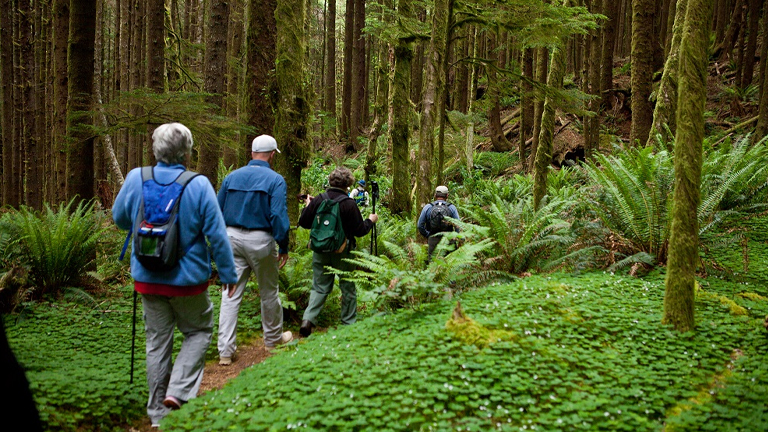
Forests provide numerous recreational opportunities that contribute to human well-being and quality of life. Well-managed forests offer spaces for activities such as hiking, camping, bird watching, and hunting. These recreational activities promote physical health, mental well-being, and a connection to nature. Effective forest management includes the development and maintenance of trails, campgrounds, and other recreational infrastructure, ensuring that forests are accessible and enjoyable for all. By balancing recreational use with conservation goals, forest managers can protect natural areas while providing valuable recreational experiences. This balance also supports eco-tourism, which generates income and raises awareness about the importance of forest conservation.
Cultural Significance
Forests hold deep cultural significance for many communities around the world. They are often seen as sacred spaces, sources of traditional knowledge, and integral parts of cultural heritage. Effective forest management recognizes and respects these cultural values, involving local and Indigenous communities in decision-making processes. By incorporating traditional ecological knowledge and practices, forest management can enhance conservation outcomes and foster cultural resilience. Protecting culturally significant sites, promoting the use of traditional forest products, and supporting cultural practices tied to forests are all aspects of effective management. This approach not only preserves cultural heritage but also strengthens community identity and cohesion.
Challenges and Solutions
Forest management faces several challenges:
Deforestation and Degradation

Deforestation and forest degradation are among the most pressing challenges in forest management. Deforestation, often driven by agricultural expansion, logging, and infrastructure development, leads to the permanent loss of forest cover. Forest degradation, on the other hand, results from activities such as unsustainable logging, mining, and fire, which reduce the forest’s ability to provide ecosystem services. These activities not only threaten biodiversity but also disrupt water cycles, increase soil erosion, and contribute to climate change through the release of stored carbon.
Solutions: Addressing deforestation and degradation requires a multi-faceted approach. One effective solution is the implementation of sustainable forest management practices that balance the need for forest resources with conservation goals. This includes promoting selective logging and reduced-impact logging techniques that minimize damage to the forest ecosystem. Legal frameworks and enforcement are also crucial, as they help prevent illegal logging and land conversion. Reforestation and afforestation projects can restore degraded lands, while community-based management and incentive programs, such as payments for ecosystem services (PES), engage local communities in conservation efforts. Additionally, international cooperation and agreements, such as the REDD+ (Reducing Emissions from Deforestation and Forest Degradation) program, provide financial and technical support to countries working to protect their forests.
Climate Change
Climate change poses significant challenges to forest management by altering temperature and precipitation patterns, increasing the frequency and severity of extreme weather events, and exacerbating the spread of pests and diseases. These changes can lead to shifts in forest composition, reduce forest productivity, and increase vulnerability to fires, droughts, and other disturbances. As forests play a critical role in sequestering carbon, the loss or degradation of these ecosystems further accelerates climate change, creating a feedback loop.
Solutions: Mitigating the impacts of climate change on forests involves both adaptation and mitigation strategies. Adaptive management practices, such as diversifying tree species, enhancing genetic diversity, and restoring degraded areas, can help forests become more resilient to changing conditions. Monitoring and early warning systems enable forest managers to respond quickly to emerging threats, such as pest outbreaks or wildfire risks. On the mitigation side, preserving existing forests, expanding protected areas, and implementing reforestation and afforestation projects enhance carbon sequestration. Integrating forest management into broader climate policies and promoting sustainable land-use planning can also help align conservation goals with climate action. Collaboration between governments, NGOs, and local communities is essential to develop and implement effective strategies.
Invasive Species
Invasive species are non-native plants, animals, and pathogens that can cause significant harm to forest ecosystems. These species often outcompete native flora and fauna, disrupt ecological processes, and alter habitats, leading to a decline in biodiversity. Invasive species can also exacerbate other forest management challenges by making forests more susceptible to pests, diseases, and environmental stressors. The introduction of invasive species is frequently linked to human activities such as global trade, travel, and land-use changes.
Solutions: Managing invasive species requires a combination of prevention, early detection, and control measures. Preventative strategies include stringent biosecurity protocols to reduce the risk of introducing invasive species through trade and travel. Early detection and rapid response systems enable the quick identification and eradication of invasive species before they become established. Control methods, such as mechanical removal, chemical treatments, and biological control (using natural predators or pathogens), can help manage established invasive populations. Public awareness and education campaigns are also vital, as they encourage responsible behaviors that reduce the spread of invasive species. Collaborative efforts among governments, scientists, and local communities enhance the effectiveness of these measures by pooling resources and expertise.
Community Involvement
Engaging local communities is crucial for successful forest management. Participatory approaches ensure that management strategies align with the needs and knowledge of those who rely on forest resources. This includes:
Community-Based Forest Management (CBFM)
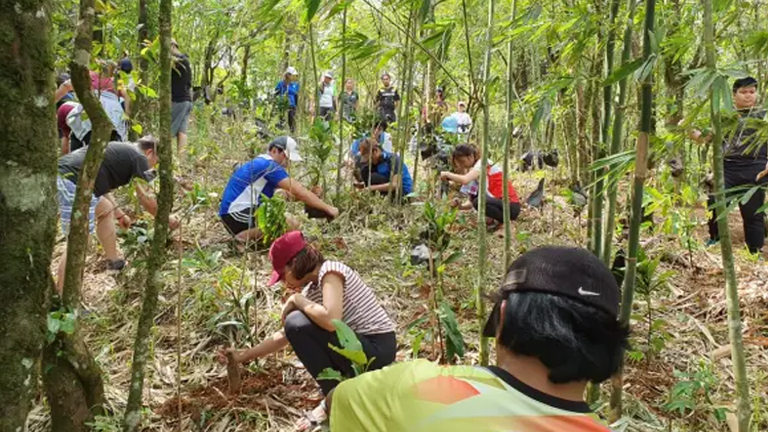
Community-Based Forest Management (CBFM) is a participatory approach that involves local communities in the stewardship and sustainable management of forest resources. Recognizing that local communities often have deep-rooted connections to their forests, CBFM aims to empower these communities by granting them rights and responsibilities over forest management. This approach not only helps conserve forests but also supports the livelihoods and cultural values of the communities that depend on them.
In CBFM, communities are actively involved in decision-making processes, from planning and implementing management practices to monitoring and evaluating outcomes. This participatory approach fosters a sense of ownership and responsibility, encouraging sustainable use and conservation of forest resources. By integrating traditional knowledge and practices with modern management techniques, CBFM enhances the effectiveness of forest conservation efforts.
One of the key benefits of CBFM is that it aligns the interests of local communities with conservation goals. When communities have a stake in the health and productivity of their forests, they are more likely to adopt sustainable practices and prevent activities that lead to deforestation and degradation. Additionally, CBFM can improve the socio-economic conditions of communities by providing them with access to forest resources, alternative livelihoods, and financial incentives through mechanisms such as payments for ecosystem services (PES).
Successful examples of CBFM can be found around the world, from community forestry initiatives in Nepal and India to collaborative forest management programs in Africa and Latin America. These initiatives demonstrate that when local communities are empowered and engaged, they can be effective stewards of their forests, contributing to biodiversity conservation, climate change mitigation, and sustainable development.
Education and Awareness
Education and awareness are fundamental components of community involvement in forest management. By raising awareness about the importance of forests and the benefits of sustainable management, communities can be motivated to take an active role in conservation efforts. Education programs can provide communities with the knowledge and skills needed to manage forests sustainably, understand the impacts of their activities, and explore alternative livelihoods that reduce pressure on forest resources.
Effective education and awareness programs are often tailored to the specific needs and contexts of local communities. They can include workshops, training sessions, and educational materials that cover topics such as sustainable harvesting techniques, reforestation, biodiversity conservation, and the impacts of climate change. Additionally, incorporating traditional ecological knowledge into these programs can enhance their relevance and effectiveness, as local communities often possess valuable insights and practices passed down through generations.
Schools and educational institutions play a crucial role in fostering a culture of conservation among young people. Environmental education curricula can instill a sense of stewardship and responsibility towards forests, encouraging future generations to value and protect these vital ecosystems. Community outreach initiatives, such as awareness campaigns, forest walks, and eco-tourism, can also engage a broader audience and build public support for forest management efforts.
Furthermore, promoting transparency and communication between forest managers, local communities, and other stakeholders is essential for building trust and cooperation. Open dialogues and participatory platforms allow communities to voice their concerns, share their knowledge, and contribute to decision-making processes. This collaborative approach ensures that forest management strategies are inclusive, culturally sensitive, and more likely to succeed.
FAQs (Frequently Asked Questions)
1. What is effective forest management?
Effective forest management involves the planning and implementation of practices aimed at maintaining and utilizing forest resources sustainably. It balances ecological, economic, and social objectives to ensure forests remain healthy and productive for future generations.
2. Why is effective forest management important?
Effective forest management is crucial for preserving biodiversity, mitigating climate change, protecting water resources, and supporting the livelihoods of communities that depend on forests. It ensures that forest ecosystems continue to provide essential services and resources.
3. What are the key principles of effective forest management?
Key principles include sustainable harvesting, conservation of biodiversity, maintaining forest health, protecting soil and water resources, and involving local communities in decision-making processes.
4. How does effective forest management contribute to biodiversity conservation?
Effective forest management practices, such as selective logging, protected areas, and habitat restoration, help preserve a diverse range of plant and animal species. It maintains the ecological balance and resilience of forest ecosystems.
5. What is sustainable harvesting?
Sustainable harvesting is the practice of extracting forest resources in a way that does not compromise the long-term health and productivity of the forest. Techniques like selective logging and reduced-impact logging minimize environmental impact and promote natural regeneration.
6 ow does forest management address climate change?
Forests play a crucial role in carbon sequestration, absorbing carbon dioxide from the atmosphere. Effective forest management practices, such as reforestation, afforestation, and protecting existing forests, enhance this carbon sink function and help mitigate climate change.
7. What role do local communities play in effective forest management?
Local communities are integral to effective forest management. Their involvement ensures that management practices respect traditional knowledge and rights, and that the benefits of forest resources are equitably shared. Community-based forest management (CBFM) is a key approach that empowers communities in stewardship roles.
8. What are the common challenges in forest management?
Common challenges include deforestation and degradation, climate change impacts, and the spread of invasive species. Addressing these challenges requires a combination of sustainable practices, adaptive management, and collaborative efforts.
9. How can invasive species be managed in forests?
Managing invasive species involves prevention, early detection, and control measures. Strategies include biosecurity protocols, monitoring and rapid response systems, mechanical removal, chemical treatments, and biological control methods.
10. What technologies are used in forest management?
Technologies such as remote sensing, Geographic Information Systems (GIS), drones, and forest management software play a vital role in modern forest management. These tools help in monitoring forest health, planning management activities, and making data-driven decisions.
11. How does effective forest management benefit the economy?
Effective forest management supports the sustainable production of timber and non-timber forest products, creates jobs in forestry and conservation sectors, and promotes eco-tourism. It ensures a stable and long-term supply of forest resources, contributing to economic stability.
12. What are some examples of effective forest management practices?
Examples include selective logging, controlled burns, reforestation, agroforestry, integrated pest management, and the establishment of protected areas. These practices help maintain forest health and productivity while balancing ecological and economic goals.
13. How can individuals contribute to effective forest management?
Individuals can support effective forest management by choosing sustainably sourced wood and paper products, participating in reforestation and conservation projects, advocating for policies that protect forests, and supporting organizations dedicated to forest conservation.



Leave your comment